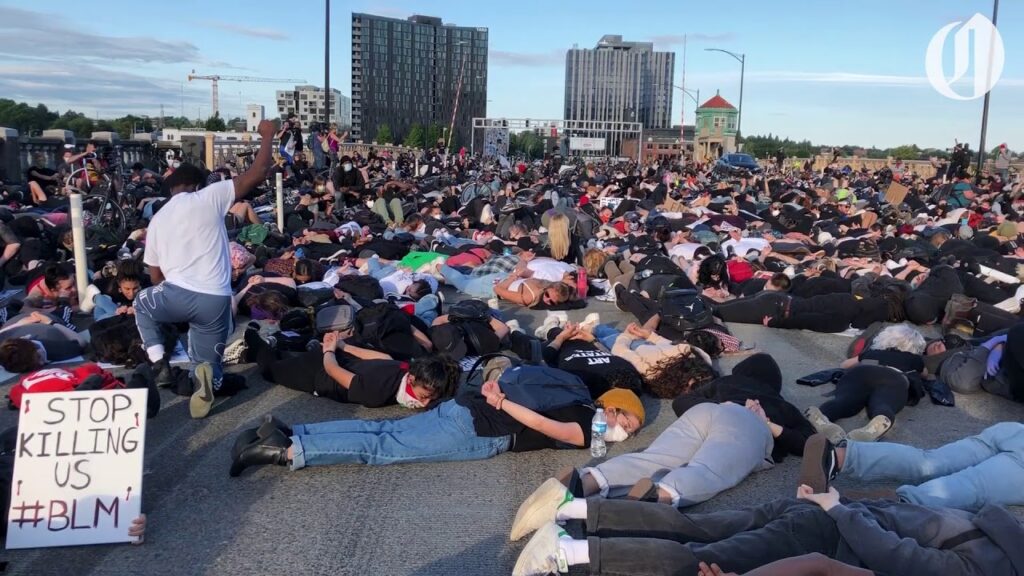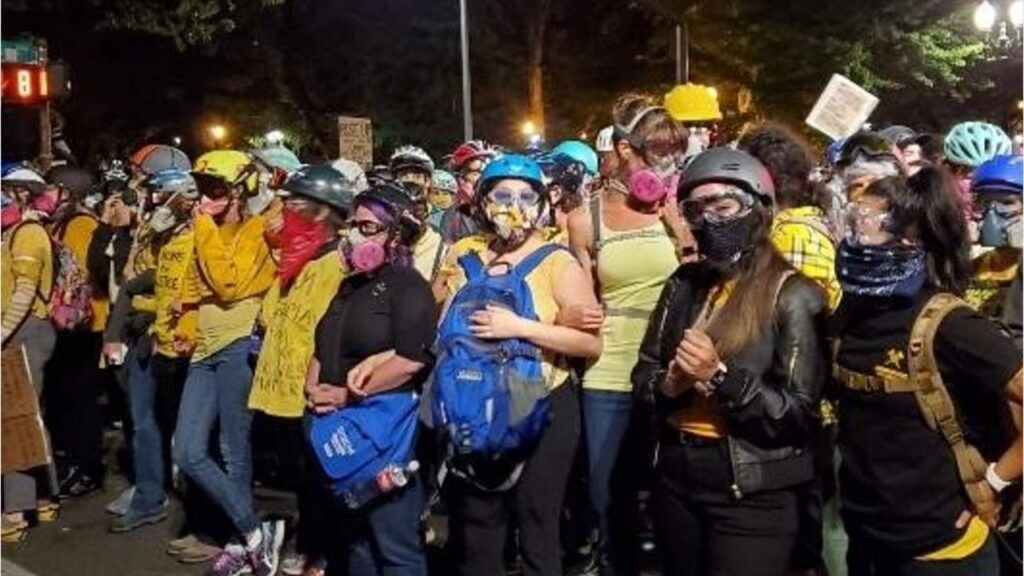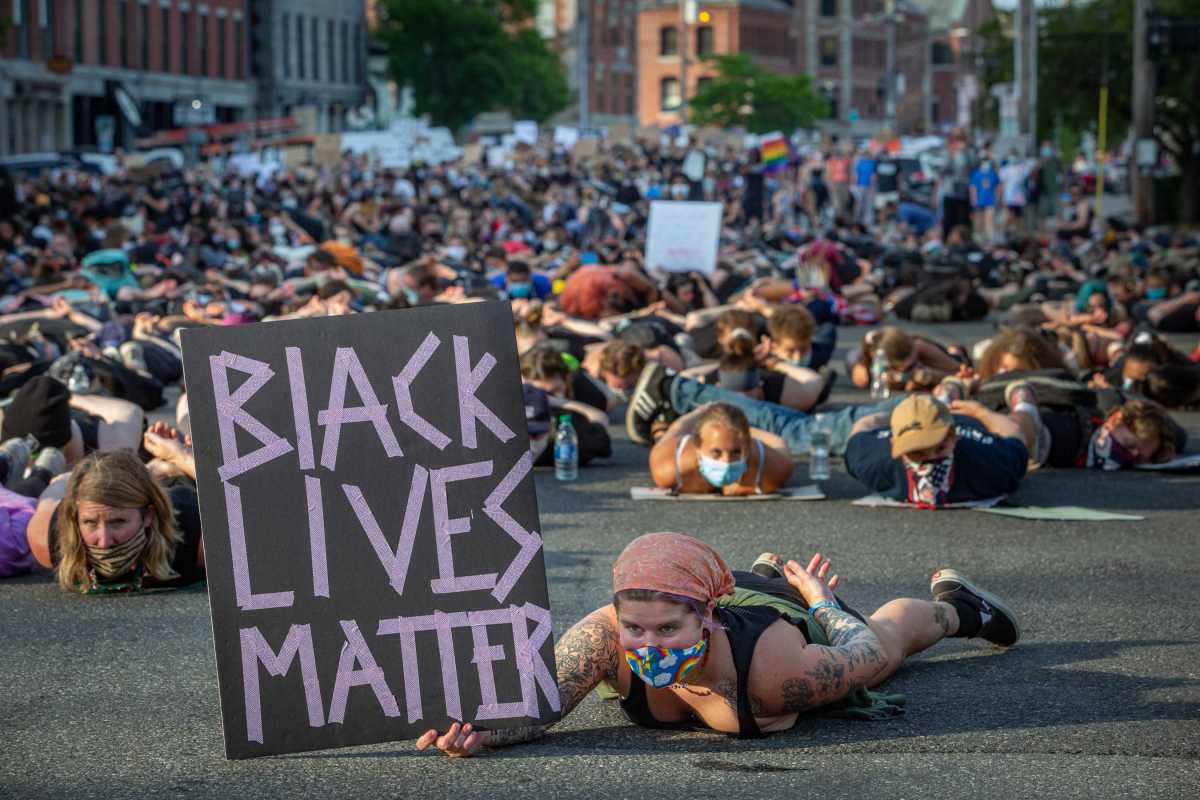The Narrative of the Portland Protests
Written By Sam Haut
The federal presence in Portland, Oregon has been a point of national contention since the end of May, with protesters clashing with police on a regular basis.

But following an executive order by President Trump authorizing federal agents to enter US cities in order to protect monuments, statues and federal property, agents of Customs and Border Protection and the Department of Homeland Security entered Portland to protect federal buildings that were being damaged.
To categorize the specific kinds of damage being done, Chad Wolf, acting Secretary of Homeland Security and Under Secretary of Homeland Security for Strategy, Policy, and Plans, put out a statement on July 16 detailing the kinds of violent acts being committed. In it Wolf mentions of plethora of acts committed by “violent anarchists,” to federal property including, but not limited to, graffitiing buildings, breaking windows, assaulting officers, shining laser pointers, lighting fires and launching fireworks.

Something Wolf’s report does not specify is how many of the “violent anarchists” were involved with each of the acts mentioned. At various points Wolf brings up crowds of 250, 300, 400 and 1,000, but does not clarify how many in that crowd were responsible for the damage that followed.
The reason why the damage is being done can get lost in the shuffle, as neither Trumps executive order nor Wolf’s statement on violence in Portland mention anything about why the protests are happening. All they do is look to condemn the violence that is happening without contextualizing the protests.
Part of that context comes from understanding the people participating in the protests, and what groups they do and do not associate with. Plenty of the people attending these protests belong to a specific organization, whether that be Portland’s Resistance, the Sunrise Movement PDX or Black Lives Matter Portland, but there are also plenty of people that do not. And of those random people that are showing up for protests, it is difficult to know why they may be there. A large amount of people attending the protests are there because of a desire to protest police brutality, systemic racism or a host of other issues. But there could also be people there that want to cause trouble or provoke people into being more violent.
There are reports of white supremacists, along with other malicious actors, attempting to incite violence at recent protests and groups that see protests as an opportunity, as reported by The Intercept, to attack police. In that piece, The Intercept describes information from leaked communications between law enforcement agencies across the country and, according to the FBI, “much of the violence and vandalism is perpetrated by opportunistic, individual actors acting without specific direction.” and that the bureau would “continue to aggressively … seek to corroborate whether or not there is in fact an organized effort to incite violence by either known criminal groups or domestic violent extremists,”
Over the past two months in Portland there have been numerous videos documenting the protests, which are useful in contextualizing the actions taken by protesters in the statement released by the Wolf. Like this one from June 3, which shows protesters marching before being tear gassed by police.

On the night of June 22, there is video documenting the protest that night, as shown in this Twitter thread. Throughout the videos, there are no clashes between the protesters and police, with only some tension over getting protesters out of the middle of the street. However, the protesters do end up moving onto the sidewalk. The rest of the night passes without incident.
On June 30, police arrested three journalists who were covering the protests. The following day, July 1, the three journalists were released and a day later, July 2, a federal court issued a temporary restraining order which blocked Portland police from arresting journalists and legal observers.
The night of July 2, protesters light a fire around an elk statue in the park next to the federal courthouse using plywood from the courthouse. Later in the evening, there are some clashes between police and protesters, as the latter throws water bottles and smoke grenades at the police, who respond with pepper balls. Some protesters also form a barrier in front of the courthouse using umbrellas and shields.
On July 4, police declared the protest a riot and used tear gas to clear the protesters after repeated attempts by police to stop the protesters from launching fireworks at the federal courthouse had failed, leading to the arrest of 12 people. On the same day there was also someone among the protesters who had a gun and pointed it at the courthouse, which contributed to increased tensions on that night.
Several times on July 11 into July 12, tear gas was used on protesters in order to disperse the crowds. It seems the reason for dispersing the crowd is because of how close the protesters were getting to the federal courthouse.

On that night of protest, the federal officers and police moved back into and around the courthouse after pushing people away and, while inside, fired tear gas and impact munitions into the crowd. At one point the federal police hit someone in the head with impact munitions, fracturing their skull.
After deploying more tear gas, the federal officers eventually leave the courthouse and push people back, arresting several in the process.
Starting around July 14, reports began emerging of federal officers taking people off of the streets and putting them into unmarked vans. According to reports, and various videos, several people were grabbed by federal officers, put into rented vehicles, and driven to a nearby station. These people were released shortly after arriving once they were read their rights, with no official charges given.
These just some examples of the use of force by police and federal agents in Portland, as well as some context for why, some of the time, force was used by law enforcement. However much of what is listed did not get included in Wolf’s statement about the actions of the protesters.
Following federal agents easing back on their presence in Portland at the end of July, the clashes between protesters and police have lessened, at least to some extent. Several articles report the state police being somewhat less inclined to using tear gas and similar crowd control munitions, however those police are also capable of attacking protesters with tear gas and other non-lethal munitions.
While not every single protester who attends these protests are completely peaceful, as evidence by protesters shooting fireworks at the federal building, that does not speak to the entirety of the protesters. Most of those attending are not launching fireworks or lightning things on fire. The vast majority are there because they feel the need to peacefully protest police brutality and to continue spreading awareness for George Floyd’s death.

